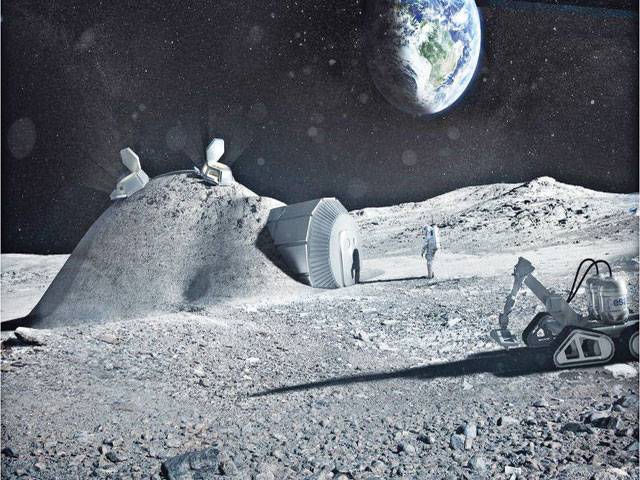WASHINGTON-Nasa has outlined more details of its plans for a landing craft that will take humans to the lunar surface.
The plans call for an initial version of the lander to be built for landing on the Moon by 2024; it would then be followed by an enhanced version.
The news comes as work was completed on the Orion spacecraft that will fly around the Moon in 2021.
This mission, called Artemis-1, will pave the way for the first attempt to land since 1972.
The presolicitation notice to industry calls for proposals on an initial lander design capable of carrying two people down to the Moon’s South Pole in 2024.
Companies will then be given the option to develop an enhanced lander capable of carrying four astronauts to the lunar surface. It would also be able to stay for longer, including through the two-week lunar night.
Can America get back to the Moon by for a “sustainable” return to the Moon that would eventually involve the construction of an outpost on the surface.
In May, Nasa announced that 11 companies would be carrying out studies and developing initial prototypes of lunar landers. The lander would start its journey from a small space station in lunar orbit called Gateway. Nasa wants a lander that’s split into three parts: a transfer vehicle or “tug” that would carry astronauts from Gateway to a lower lunar orbit, a descent stage that would take them from low lunar orbit to the surface, and an ascent stage that would blast the crew back to Gateway at the end of their mission.
On 20 July, the 50th anniversary of the Moon landing, Nasa unveiled the completed Orion crew module and service module for the Artemis-1 mission. The announcement was made by Vice President Mike Pence at a ceremony to celebrate the Apollo 11 mission at Nasa’s Kennedy Space Center (KSC) in Florida. “Orion is a new class of spaceship, uniquely designed for long-duration deep space flight, that will return astronauts to the Moon and eventually take the first humans to Mars, and bring them all back safely,” said Lisa Callahan, vice president and general manager of commercial civil space at Lockheed Martin, which has built the Orion crew module for Nasa.
“Orion will accelerate scientific discovery of our solar system and will be the cornerstone of the defining space achievement of this era.”
Lockheed Martin, Nasa and supporting contractors have assembled the Orion crew module to its finished state at KSC. The work included installing the capsule’s avionic computers, harnesses, propulsion system, 11 parachutes, and the largest heat shield ever built. The crew module is designed to carry four astronauts beyond Earth orbit.
The capsule and its service module were stacked together earlier in the week at Kennedy. The service module provides power and other life support systems to the crew module, and houses 33 different engines to manoeuvre the spacecraft. It was provided by the European Space Agency (Esa) and built by Airbus.
The combined Orion stack will soon be powered up and undergo a series of integrated systems tests.
In September, the combined stack will be shipped to Nasa’s Plum Brook Station in Ohio, where it will go through environmental testing in a large thermal vacuum chamber as well as testing for electromagnetic interference and compatibility. Once Orion returns to KSC at the end of the year, the spacecraft will go through final preparations before Lockheed Martin delivers it for launch processing in early 2020.
Thursday, April 18, 2024
Nasa Moon lander vision takes shape

PTI's Yasmin Rashid transferred to Lahore hospital due to health concerns
9:40 PM | April 18, 2024
Filling superior courts' vacancies top priority: CJP
9:05 PM | April 18, 2024
PM says will personally monitor Saudi investment in Pakistan
9:04 PM | April 18, 2024
PTI nominates Shibli Faraz to be opposition leader in Senate
9:03 PM | April 18, 2024
Turkiye commends Pakistan's efforts in fostering regional peace
9:03 PM | April 18, 2024
Hepatitis Challenge
April 18, 2024
IMF Predictions
April 18, 2024
Wheat War
April 18, 2024
Rail Revival
April 17, 2024
Addressing Climate Change
April 17, 2024
Justice denied
April 18, 2024
AI dilemmas unveiled
April 18, 2024
Tax tangle
April 18, 2024
Workforce inequality
April 17, 2024
New partnerships
April 17, 2024
ePaper - Nawaiwaqt
Advertisement
Nawaiwaqt Group | Copyright © 2024





